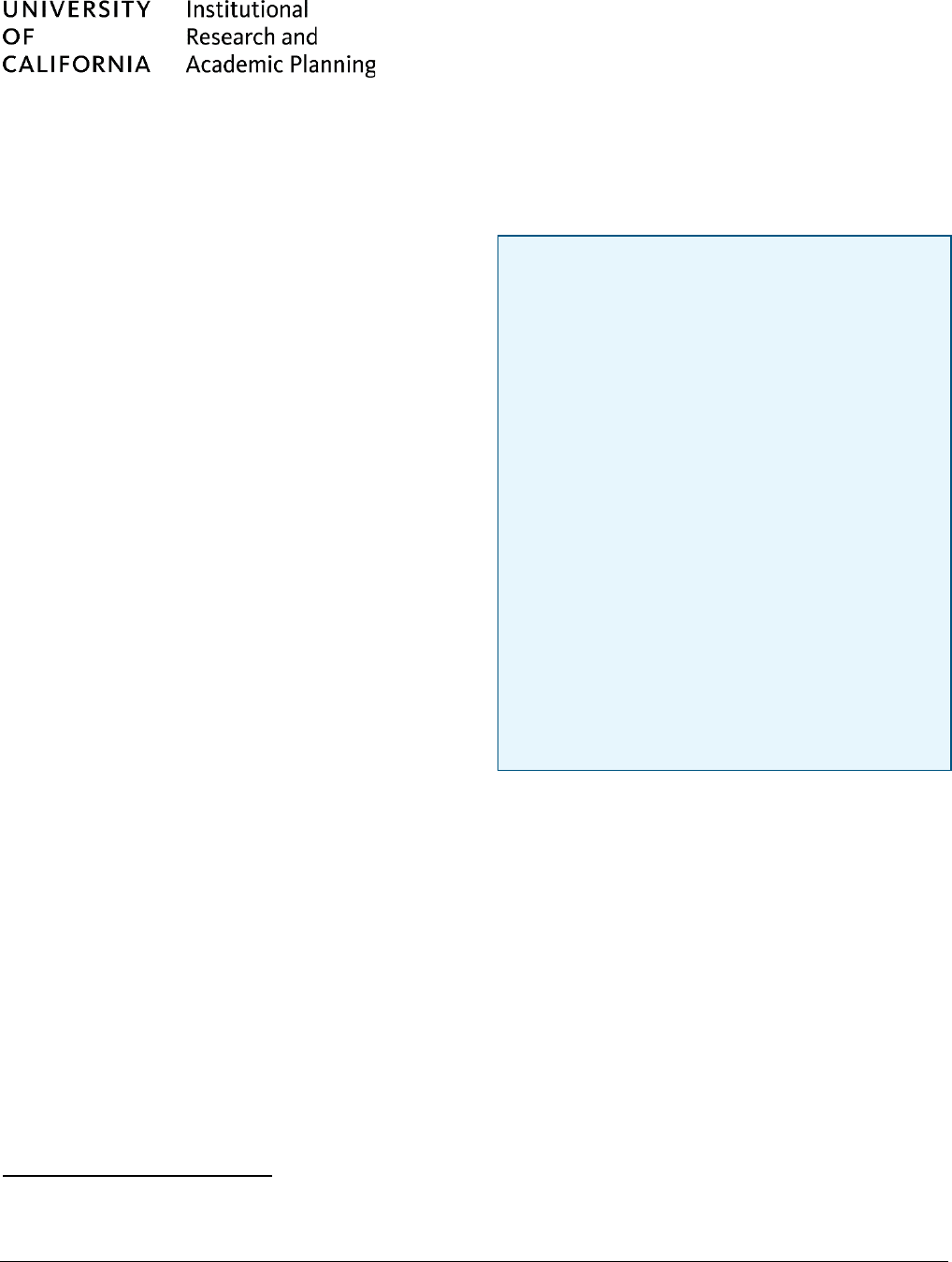
UC Extension Degree and Certificate Completion
Programs and the UC Reengagement Consortium
MARCH 2024 Find more at ucal.us/irap & ucal.us/infocenter 1
University of California Extension Degree and Certificate
Completion Programs and the UC Reengagement Consortium
The California State Budget Act of 2019
appropriated $15 million in one-time funding for
the University to “develop or expand degree and
certificate completion programs at the University
of California (UC) extension centers.” There were
two requests for proposal (RFPs) periods.
In the first RFP round, UC Merced (UCM) and
UC Santa Barbara (UCSB) received funding for
degree completion work, UCLA for certificate
completions that support underserved
communities, and UC San Diego (UCSD) to
produce a California market workforce market
demand dashboard with skill gaps and workforce
needs to support all UC Extension operations.
The second RFP round resulted in additional
funds for UCM and UCSD to continue their work,
along with approval of UC Davis’s (UCD) and UC
Riverside’s (UCR) joint degree completion
proposal and the formation of the UC
Reengagement Consortium (UCRC). The UCRC
consolidated degree completion efforts for UCM,
UCSB, UCD and UCR.
This topic brief will describe these efforts in greater detail, update programmatic progress
including degree and certificate completion numbers and demographic information, as well as
illuminate impediments to this work and potential solutions.
UC Extension Degree Completion Programs
After the first round of RFPs and funds distribution, UCM and UCSB began phase 1 degree
completion efforts, with UCSB’s effort at a slightly slower pace due in large part to COVID-19
pandemic impacts.
0F
1
Phase 2 RFP funding for degree completion work began with the UCD and
UCR joint proposal that was approved and included partnerships with UCM and UCSB and the
formation of the UCRC. In the sections that follow, these programs are in more detail.
UC Merced Extension Degree Completion Program
UCM’s Degree Completion Program is designed to support students who once attended a
University of California campus but never finished their first baccalaureate degree to reconnect
with programs, requirements, and the financial assistance needed to finish their degree. The
1
UCSB originally designed their degree and certificate program for mostly in-person instruction. The
profound impacts of the COVID-19 pandemic and the shift to emergency online instruction slowed their
progress and forced them to adjust their approach, which resulted in implementation delays.
FUNDING
• The California State Budget Act of 2019
appropriated $15 million in one-time funding
for the University to “develop or expand
degree and certificate completion programs at
the University of California (UC) extension
centers.”
• Six UC campuses were awarded funds for
degree and certificate completion:
UC Merced $5,778,498
UC Davis/UC Riverside $4,850,000*
UC Santa Barbara $967,921
UCLA $2,910,590**
UC San Diego $450,000***
*UCD and UCR submitted a joint proposal, but the funds
distribution is as follows: UCD $2,221,290, UCR
$2,628,710.
**The UCLA programs is for certificate completion only.
***The UC San Diego funding was allocated for market
demand research.
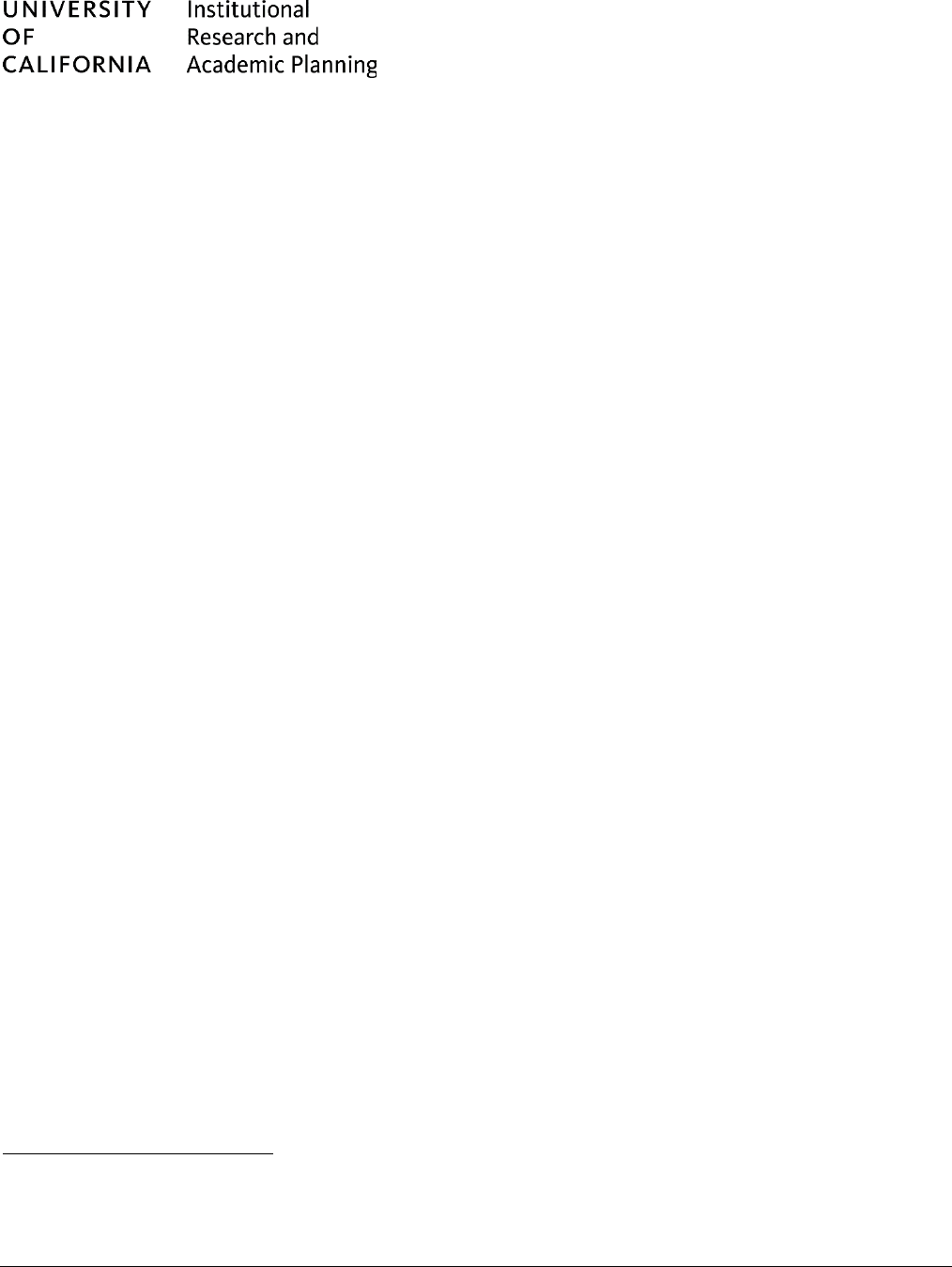
UC Extension Degree and Certificate Completion
Programs and the UC Reengagement Consortium
MARCH 2024 Find more at ucal.us/irap & ucal.us/infocenter 2
program was initially designed to target UCM students who left in good standing, interested in a
major within the School of Social Sciences, Humanities, and Arts (SSHA) and were away for a
minimum of two consecutive regular terms. The program quickly expanded, out of demand, to
supporting any UCM or non-UCM stopout, across all disciplines including Natural Sciences,
Engineering, Social Sciences, Humanities, and Arts, as well as students who stopped out in poor
academic standing and/or were academically dismissed.
Through a partnership between UCM’s Extension program and the SSHA, the goals are to grow
core facilities and offer degree completion pathways for stopout students. The program will
significantly expand degree completion opportunities in existing majors and certificate programs,
with integrative support of comprehensive programming and specialized academic advising.
The main goals are: (1) enroll stopout students via transfer pathways; and (2) grow existing major
degree programs and initiate new Extension certificates for stopouts. To do so, the specific aims
are:
• Design and initiate a study of UCM stopout students.
• Promote and expand major degree completion, with certificate offerings as enrichment and
post-baccalaureate professionalization.
• Enhance academic support through specialized staffing and dedicated student success
programming.
• Support academic capacity growth, with expansion and improvement of major and
certificate course offerings.
• Develop facilities by retrofitting dedicated classrooms for synchronous learning
opportunities.
This project design increases degree completion with outreach, degree pathways and
comprehensive support to encourage and sustain the return of stopout students in the region.
UC Santa Barbara Extension Degree Completion Program
UCSB’s initial proposal focused on getting financially distressed transfer-eligible city college
graduates on the UCSB matriculation track. But the campus faced policy and practical
impediments and decided to participate in UCRC efforts and reach out to near-completer
stopouts to assist them with their degree completion. They have recently started working with
UCSB’s Division of Undergraduate Education to identify the recent stopouts who are eligible for
their program.
In addition, UCSB first-year efforts focused on creating the technical infrastructure needed to
support a remote presence as well as advance marketing efforts. Subsequently, they are
beginning to see good enrollment growth in the GROW
1F
2
eligible programs, including Accounting,
Applied Behavior Analysis, Business Administration, Business Communication & Law, Business
Leadership, Cleanroom Training, Child Life, Digital Marketing, Emergency Medical Technician
2
In collaboration with UCOP, and supported by funds that are part of those allocated for degree and
certificate completion illuminated in this brief, UCSB Professional and Continuing Education (UCSB PaCE)
launched GROW, a degree completion and professional development assistance initiative that is
exclusively for North County Santa Barbara, San Luis Obispo and Kern County residents.
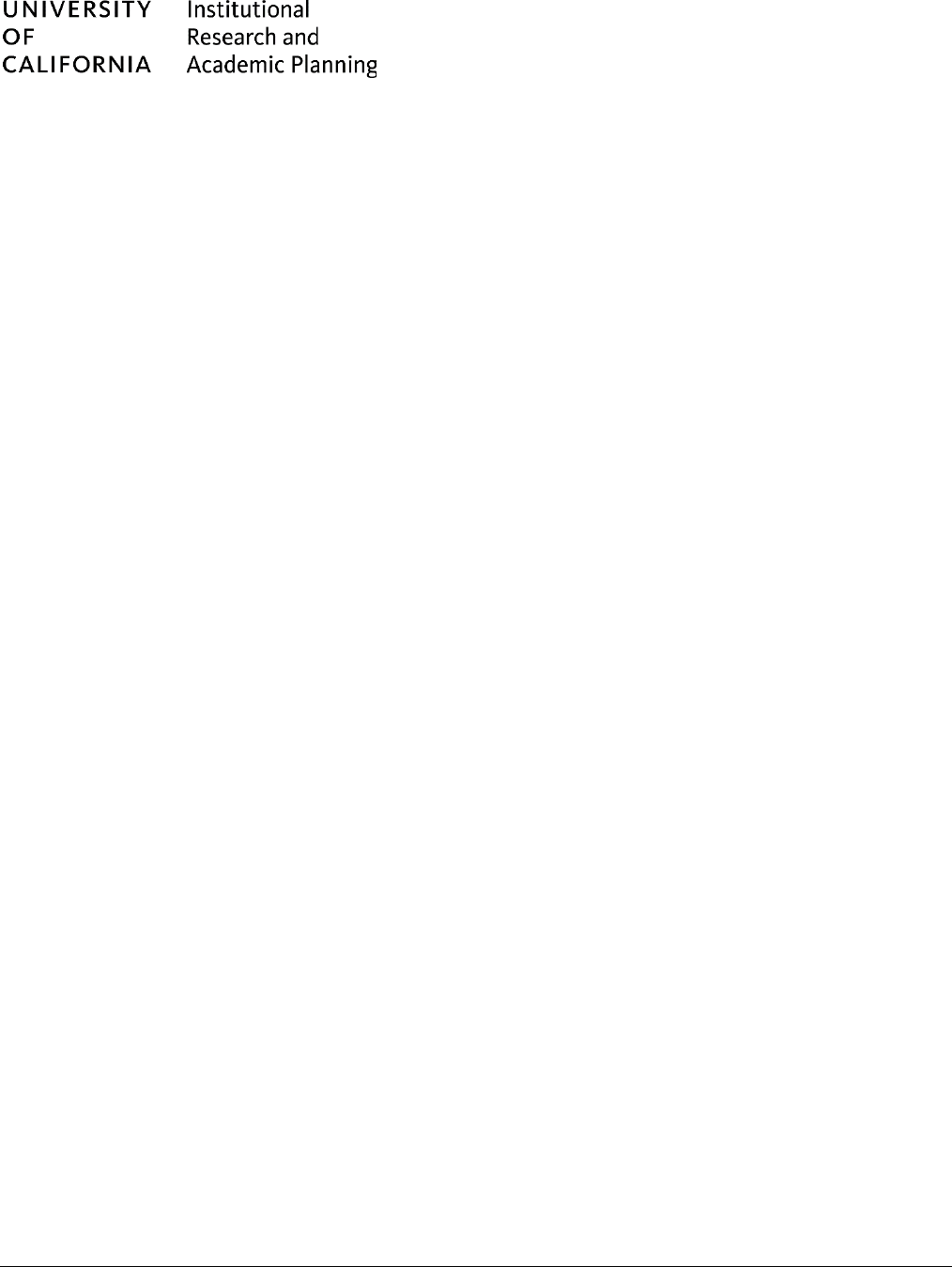
UC Extension Degree and Certificate Completion
Programs and the UC Reengagement Consortium
MARCH 2024 Find more at ucal.us/irap & ucal.us/infocenter 3
(EMT), Human Resource Management, Hospitality, Introduction to Global Business, Management
Training for Public Administration, Paralegal Studies, and Project Management.
Future work will focus on new north Santa Barbara county workforce development programs
including in Management Training for Public Administrators (in collaboration with, and advised by,
the City of Santa Maria); Hospitality Workshops; Cleanroom Training (in collaboration with Santa
Barbara City College and UCSB Engineering and advised by local semiconductor technology
companies); and currently working with Allied Health Workforce Shortage Workgroup to develop
programs around healthcare industry.
In collaboration with UCSB Career Services, UCSB has been working to set the foundations for a
career advising program, including customized job-search, resume polishing, interview help,
tools, and free consultation with professional advisors.
UC Davis Extension Degree Completion Program
UCD degree completion work is divided into two phases.
Phase 1 work focuses on UC stopouts not already engaged by the campus. Initial students
targeted are UC stopouts in good standing, students who entered UCD between 2008-2018, and
those who experienced at least a two-quarter lapse.
Phase 2 efforts focus on adults in their service area with some college, no degree. The target
population now includes a general population of adults who might benefit from a UCD education,
whether it be a degree or high-quality alternative credential.
Degree completion is at the core of these efforts, particularly in Phase 1. As the project broadens
its target population in Phase 2, UC certificate programs may provide an additional pathway by
which the University of California can support adults in transforming their lives and advancing
their careers.
UC Riverside Degree Completion Program
UCR degree completion efforts provide degree and certificate completion to UCR stopouts,
stopouts who wish to transfer from other UC campuses, and California residents with some college
and no attainment living in or around Riverside, San Bernardino, Orange, and Los Angeles
counties. The program offers three primary pathways for student reengagement: 1)
readmission/transfer; 2) pre-readmission eligibility coursework via concurrent enrollment or XR
courses; and 3) alternative credentials/career certificates.
The UCR degree completion program provides a combination of “high touch" advising support and
academic preparatory coursework to fill curricular gaps or address other academic readiness
issues (e.g., grade improvement, refreshers, financial aid counseling support). Advisors build
personal connections with the prospective returning students, get to know them, and act as
program participants, “advocates,” and “champions” that connect them with resources and people
to help them return and complete. Outreach is proactive rather than reactive and every effort is
made to provide holistic advising support to address students’ non-academic needs including
housing, basic needs, childcare, and mental and physical health. Close partnership with the
Academic Resource Center and a designated counselor in the Financial Aid office helps advisors
address two of the main concerns that UC stopout students identified as barriers in the UCOP
systemwide stopout survey: financial cost and academic preparedness.
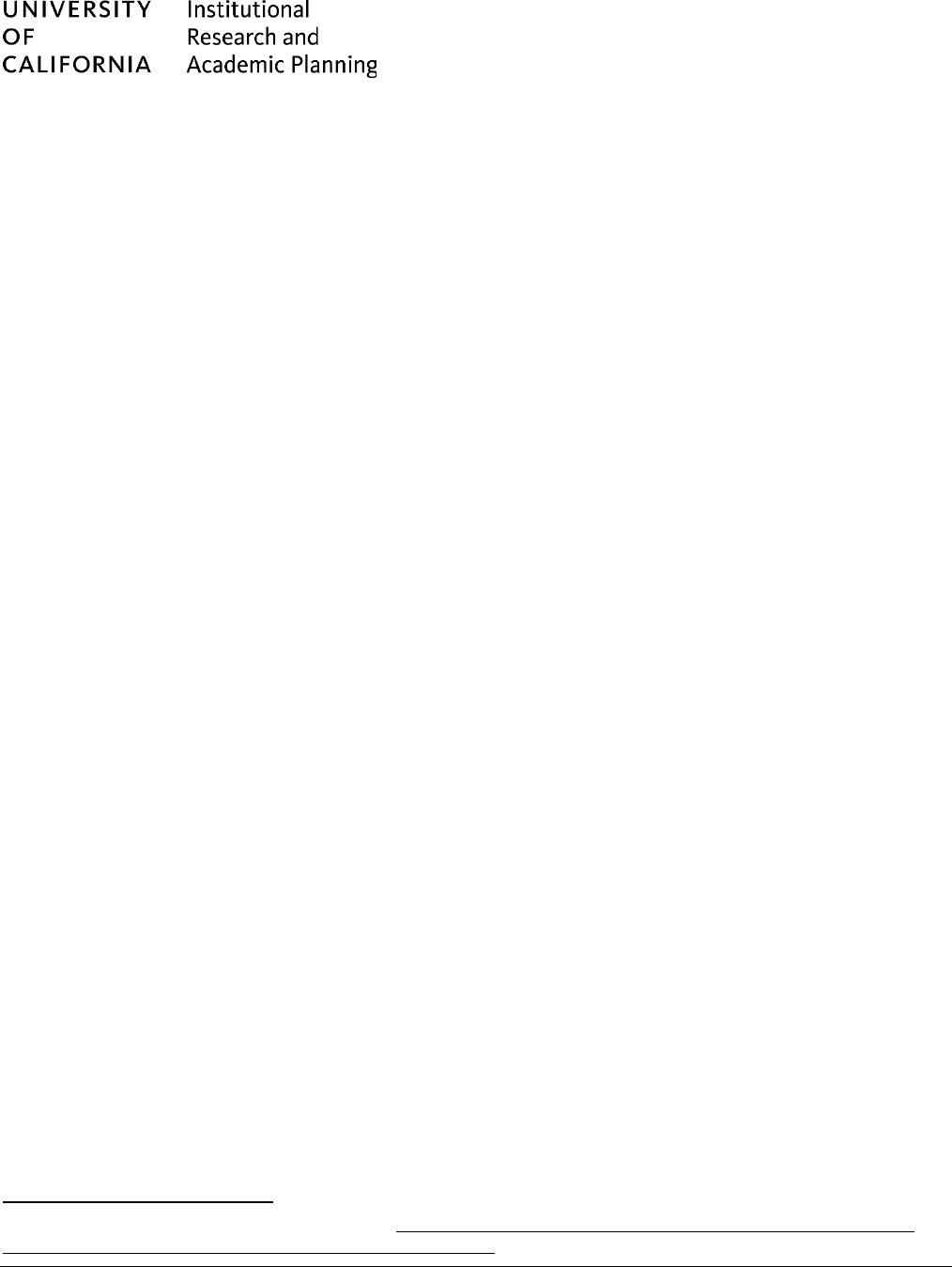
UC Extension Degree and Certificate Completion
Programs and the UC Reengagement Consortium
MARCH 2024 Find more at ucal.us/irap & ucal.us/infocenter 4
At the onset of this program, UCR understood the importance of tying the program to regional
labor and market needs and committed to being data driven in their planning and decision
making. They have utilized research on UC stopouts from UCSD Extension, as well as the
Skillscape Workforce Dashboard (described later in this report) that UCSD Extension created in
partnership with UCSD Center for Research and Evaluation.
Thanks in large part to UCR’s partnership with Growing Inland Achievement (GIA), a regional K-
16 collaborative that works to achieve education and economic equity in the Inland Empire region
of Southern California, UCR was able to access a database, provided by CollegeAPP free of
charge, of California residents in Riverside and San Bernardino counties who have “some college
and no degree” and a strong interest in returning to complete their degrees at a university within
the next two years.
In addition to data from GIA, they have also relied on their industry association to provide market
research. The University Professional and Continuing Education Association recently completed a
market study to identify specific market needs and alignment with their current certificate program
offerings. Projected regional market growth areas were identified in the following occupational
fields: business, engineering and technology, healthcare and medicine, natural and agricultural
sciences, education, and public policy and administration. High quality UC credentials are valued
by employers. Recent analysis by Moody’s and others support that alternative credentials are the
fastest growing educational segment, as adults increasingly recognize the need to continually
reskill and upskill to remain employable.
2F
3
While this market research provides prioritized target areas for promotion of job-aligned
certificate programs to stopout students, the UCR Degree Completion program’s primary focus is
on reengagement for the purpose of bachelor’s degree completion. However, they also anticipate
that there may be interest in the certificate pathway primarily from individuals who did not attend
UCR but completed some college credits at other institutions; thus, they expect to see higher
interest in certificates.
UC Reengagement Consortium
UCM, UCR, UCD, and UCSB comprise the UCRC. Led by the UCRC Leadership Committee, their
innovative consortium model extends beyond programmatic and audience expansion to include
shared operational services and a multi-level community of practice that supports the success of
all four partner campuses in the pursuit of reengagement, re-entry, and completion.
UCRC has established communities of practice at the advising, director, and dean levels and each
of these groups meets weekly or monthly to collaborate and share promising practices around
degree completion program implementation. Each of their campuses also engages
representatives from their campuses’ undergraduate education units (Registrars, Financial Aid
Officers, Advisors, Housing, etc.) to work collaboratively to address barriers to re-engagement
and re-entry.
Given the vast territories the four UC Extensions cover, their combined and collaborative efforts
serve most of the state of California, including the most underserved regions and populations of
the state. Having adjacent territorial boundaries and similarly large and heterogeneous markets
allow them to think beyond the boundaries of each institution to identify viable pockets of need
3
Inside Higher Education, 27 August, 2020, https://www.insidehighered.com/news/2020/08/27/interest-
spikes-short-term-online-credentials-will-it-be-sustained

UC Extension Degree and Certificate Completion
Programs and the UC Reengagement Consortium
MARCH 2024 Find more at ucal.us/irap & ucal.us/infocenter 5
that might not achieve economies of scale within a single region. Below are UCRC areas of
focus.
Reentry/Reengagement Pathways:
Reengagement efforts are focusing on two populations: 1) UC stopouts, and 2) California resident
adults with some college, and no degree or certificate attainment.
The UCRC is making a systematic outreach effort to reach UC stopouts at UCM, UCR and UCD
from 2005 to the present as a supplement to existing reengagement and retention activities on
the campuses serving this population through a combination of “high-touch" advising support and
academic preparatory coursework to fill curricular gaps or address other academic readiness
issues (e.g., grade improvement, refreshers, financial support). The latter is being accomplished
by leveraging the concurrent enrollment mechanism or, when sufficient demand exists, offering
dedicated XR/XM courses.
Transfer Pathway:
Similar to reentry, there are systems and structures on UC campuses to support transfer
students. For students who are academically ready to transfer, the UCRC is not duplicating this
work but rather providing warm hand-offs to existing transfer programs/advisors. Some portions
of this population have academic gaps in their preparation that the UC Extensions are well poised
to fill. Using XR and XM courses and concurrent enrollment to help students earn transferable
credit.
Curricular and Operational Supports for Partnering Campuses, including UCM and UCSB:
A key aspect of this collaboration is the commitment of all four campuses to share strategies,
practices, curricula, and even operational staff to support the success of each campus. This
approach will serve not just the current UCR/UCD programs but will also augment the capacities
at UCM and UCSB to promote success of the entire UC Extension Degree Completion Pilot.
Operational Sharing:
The UCD, UCM, UCR and UCSB partner campuses are among the smaller UC Extensions. Thus,
the commitment to sharing personnel and existing technologies allows the Consortium to achieve
maximum economies of scale and operational efficiencies and is crucial to sustainability of this
program long-term. UCRC is building on this successful and flexible model allowing individual
Extensions to leverage strengths across the system, save resources, and scale quickly.
Specifically, UCR and UCD are sharing instructional design and IT support for systems
integration and UCR and UCM are sharing a CRM Manager and Assistant Director. Campus
Advising Liaison. They are also aggregating their data and providing it to UCD who then add the
data to Tableau for the purposes of UCRC collective reporting.
Advising is also being shared across campuses. The academic advising pools, although split and
housed at both UCR and UCD act as agents of the overall UCRC mission; connecting students
with the program and supports (tutoring, etc.) at the partner campus that fits their needs. This
helps to facilitate a smooth transition of students between campuses and provides continuity of
care and service for the students as they proceed through the funnel from identification to
outreach and from intake and advising.
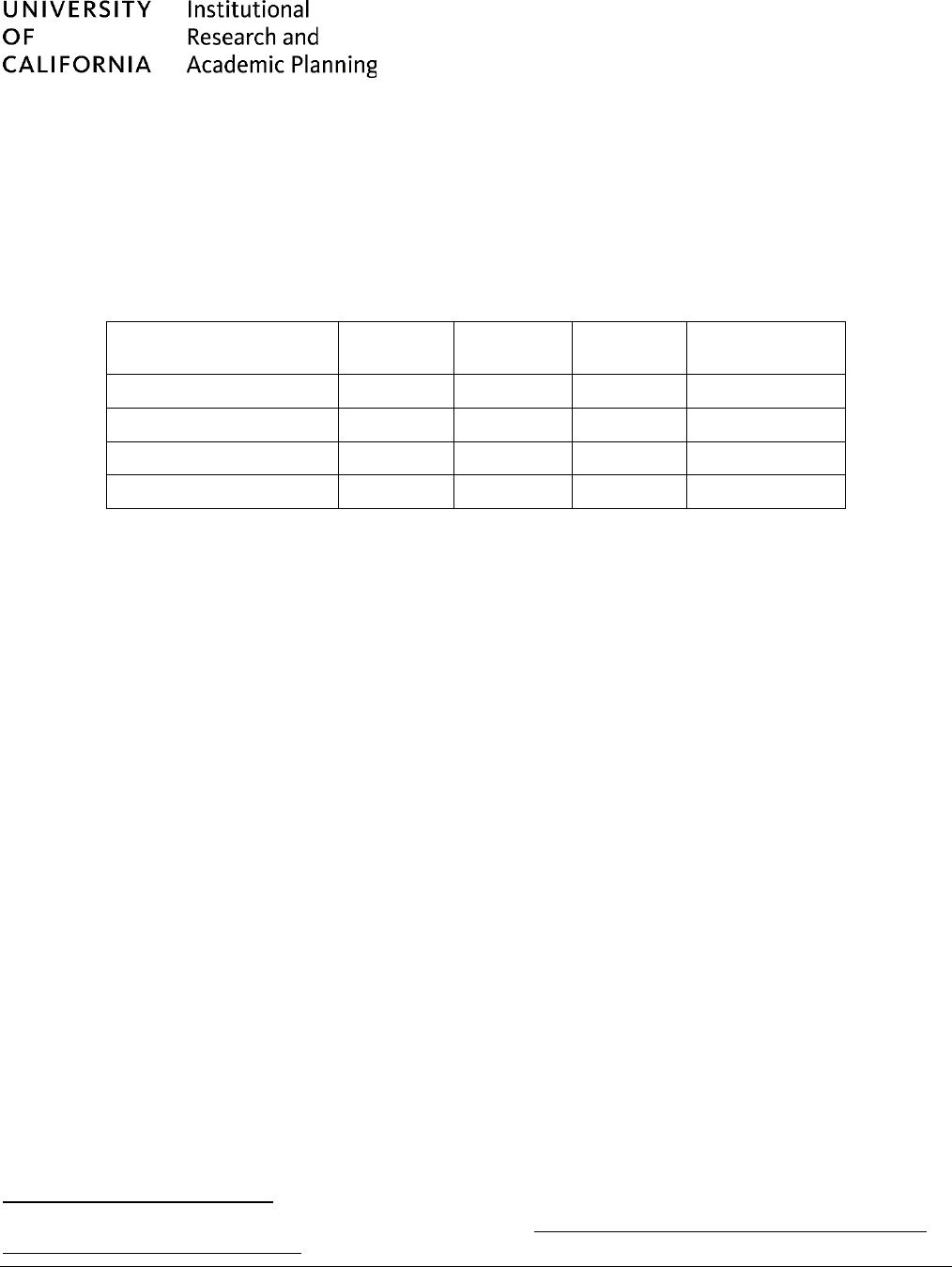
UC Extension Degree and Certificate Completion
Programs and the UC Reengagement Consortium
MARCH 2024 Find more at ucal.us/irap & ucal.us/infocenter 6
UCRC Degrees Conferred and Demographics
As of Spring 2023, 76 students have already received a degree with another 41 filed for
graduation from three UCRC campuses (UCD, UCM, and UCR; see Table 1). UCSB has awarded
certificates but maintains a relationship with UCRC for degree completion. Additionally, over 100
students are enrolled and over 400 students are receiving active advising, with enrollment
expected to grow as UCRC scales up its outreach and programs..
Table 1. Total degree completion rates to date (spring 2023)
Campus
Total
Enrollment
Filed for
Graduation
Degrees
Conferred
Students
actively advised
UC Davis 34
8
31 54
UC Merced 44
33
33 264
UC Riverside 24
0
12 117
Total 102
41
76 435
A profile of undergraduate students over a 15-year period, from 2002-2016, showed around 10
percent of undergraduate students started but did not complete a degree at UC or any other
university.
3F
4
Compared to undergraduate degree recipients, students who do not complete their
degrees are more likely to come from underrepresented race/ethnicity groups. Specifically, there
were higher proportions of African American/Black (6 percent compared to 3 percent) and
Hispanic/Latino(a) (27 percent compared to 18 percent) students among those who did not
complete a bachelor’s degree.
However, students who return to UC and complete a degree through UCRC are also more likely
to come from underrepresented racial/ethnic groups (see Figure 1 below). That is, compared to
both undergraduate degree recipients and students who stopped out, there were higher
proportions of African American/Black (12 percent) and Hispanic/Latino(a) (46 percent) students
who completed a degree between the 2020-21 and 2022-23 academic years. Although the initial
numbers are small (76 degrees conferred), the UCRC degree and certificate completion data
seems to provide some evidence that groups of students who may be more likely to stopout (e.g.,
students from underrepresented racial/ethnic groups) are responding to targeted efforts to
reengage with the university.
4
Profile of undergraduate stopouts, UC Information Center: https://www.universityofcalifornia.edu/about-
us/information-center/ug-stopouts
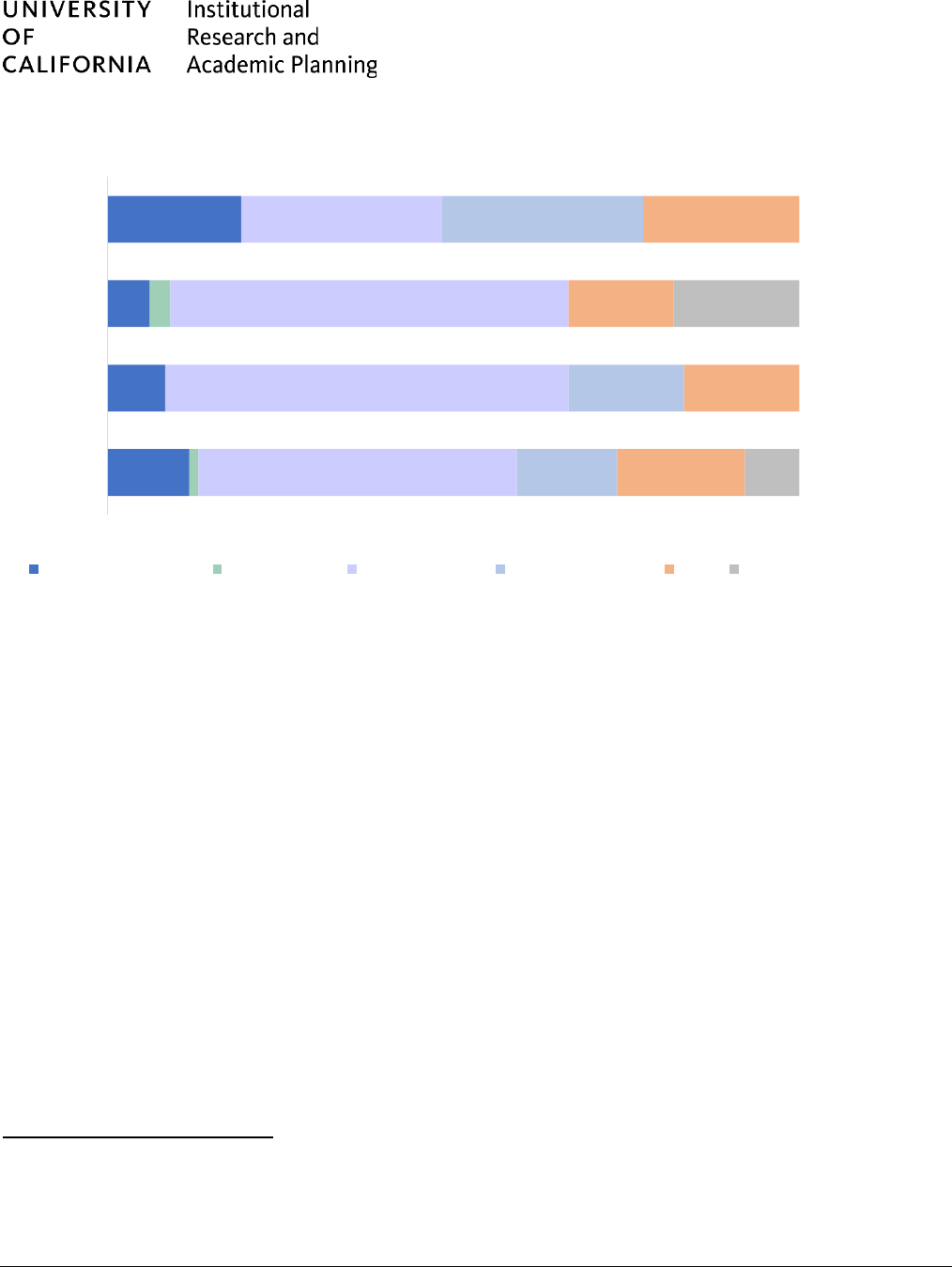
UC Extension Degree and Certificate Completion
Programs and the UC Reengagement Consortium
MARCH 2024 Find more at ucal.us/irap & ucal.us/infocenter 7
Figure 1. Degrees conferred by race/ethnicity (2020-21 – 2022-23)
Challenges and Opportunities to Improve the Degree and Certificate
Completion Process
UCRC campuses identified existing challenges and opportunities to increase degree and
certificate attainment.
Challenge: The “Senior Residency Requirement”
Challenges to the degree completion process vary somewhat by campus but all campuses with
degree completion programs noted the “senior residency requirement” as a significant
impediment (Senate Regulation 630.A. below).
SR 630.A.
Except as otherwise provided in this section and SR 614
4F
5
, 35 (or 24 semester) of the final 45 (or
30 semester) units completed by each candidate for the bachelor's degree must be earned in
residence in the college or school of the University of California in which the degree is to be
taken. (Am 9 Mar 83; Am 23 May 01)
Many near completers spent much of their undergraduate career on campus. However, since
stopping out, they moved home, are working full time, and each have their own unique family
5
Senate Regulation 614.: With the approval of the dean of the candidate's college or school, a candidate
for the Bachelor's degree who was in active service in the armed forces of the United States in the year
preceding the award of the degree may be recommended for the degree after only one term of University
residence in which the candidate completes at least 16 units or passes a comprehensive examination in
his/her major or field of concentration.
19%
6%
8%
12%
3%
1%
29%
58%
58%
46%
29%
17%
14%
23%
15%
17%
18%
18%
8%
UCD
UCM
UCR
Total UCRC
African American/Black American Indian Hispanic/Latino(a) Asian/Pacific Islander White Unknown

UC Extension Degree and Certificate Completion
Programs and the UC Reengagement Consortium
MARCH 2024 Find more at ucal.us/irap & ucal.us/infocenter 8
circumstances that would make it difficult to return to campus. Meanwhile, online course offerings
remain limited.
As noted by UCD, online courses taken via Open Campus, do not receive residence units. “It is
inequitable that matriculated Davis students are receiving residence units for these courses,
while our Open Campus stopouts do not.”
Potential Solutions:
• Providing a blanket (or college/school level) waiver of residency requirement for students
funneling through Degree Completion programs such as the exception implemented below
by UCD (approved by the UCD Senate):
Students completing their degree program through the UCD Stopout Project are exempt from the
senior residence requirement as described in Senate Regulation 630.A. Dean’s Offices may key
this exemption without further approval of the Academic Senate. This authorization is in effect
through graduation term summer 2024.
• Creating policy that includes Extension coursework in residence.
• Include coursework taken at any UC campus as “in residence.”
Challenge: Lack of Access or Applicability to Online Courses
The fact that online courses do not meet the residency requirements, as outlined above, is
particularly problematic given that the stopout student population has expressed an overwhelming
need for online coursework.
5F
6
Many stopout students are caregivers, working professionals, or do
not live geographically close to their former campus. Further, for students with high unit counts,
transferring to another campus is not a viable option to complete their degrees.
According to UCR and in addition to the challenges in meeting the residency requirement, many
students cannot access appropriate solutions to complete their degree at UCR due to the lack of
online course offerings and online programs.
Also, because GPA does not transfer, online (XB, XD, XM, XR etc.) courses are also not a
solution for students who left in poor standing and want to regain eligibility to readmit.
UCR has no oversight on the modality for concurrent enrollment courses and seats in concurrent
enrollment are limited. UC Online is only a viable option for matriculated students. The lack of
articulation across campuses also requires people and time-intensive advocacy to create viable
online solutions for degree completion program students.
Potential Solutions:
• Providing a functional mechanism for cross-campus articulation of breadth courses to help
students complete.
• Working with Extension to expand the online course portfolio.
• Identify a list of online course offerings across all campuses.
6
In outreach to over 2,300 UC stopouts that reported on the UCSD degree completion stopout survey in
Fall 2021, UCM was able to engage over 80 students. Of those 80 students, 96% indicated that online
course options were going to be crucial for them to complete their degrees.
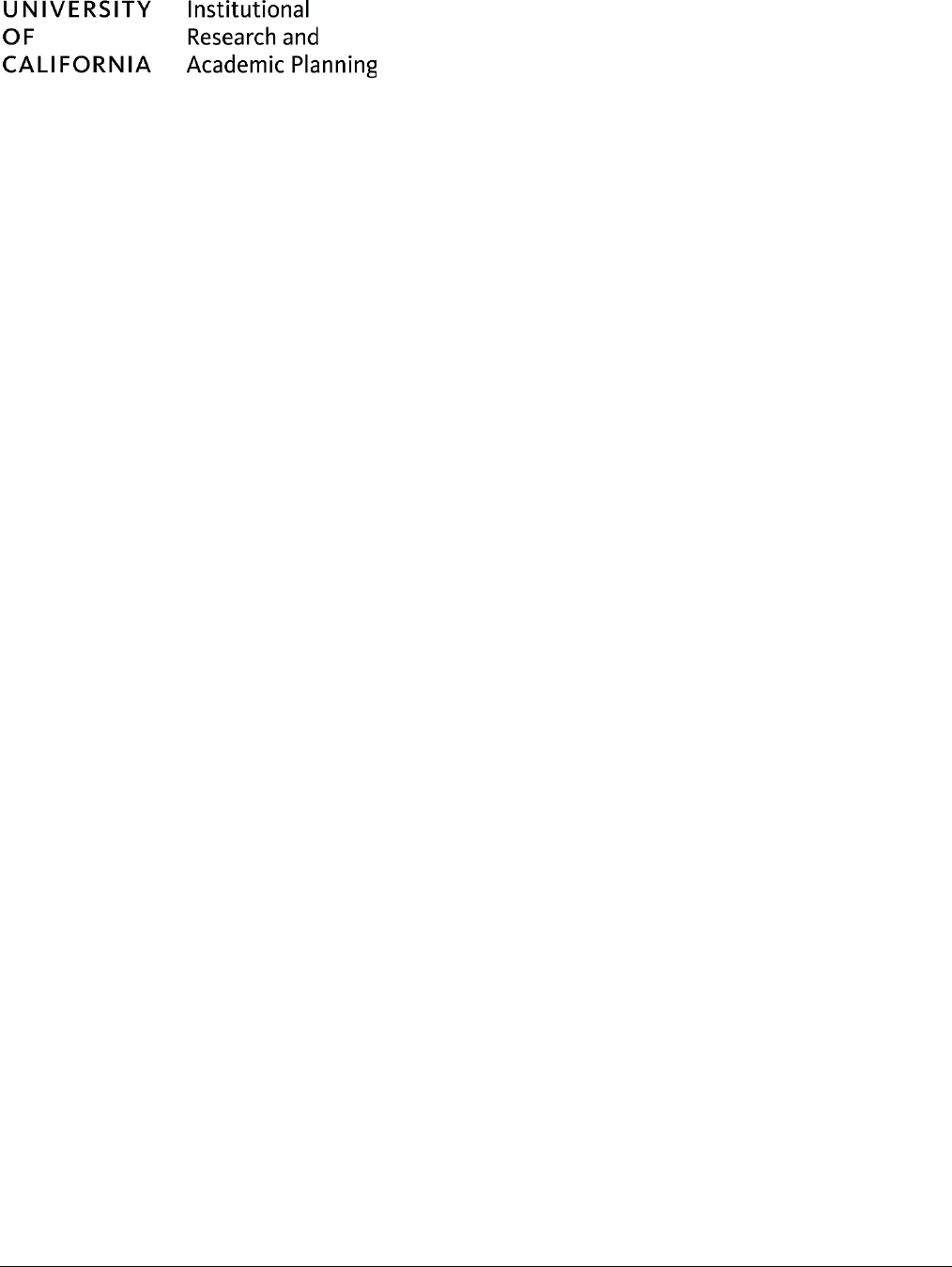
UC Extension Degree and Certificate Completion
Programs and the UC Reengagement Consortium
MARCH 2024 Find more at ucal.us/irap & ucal.us/infocenter 9
• Offering upper division coursework online.
• Waiving residency requirement for online coursework completed elsewhere.
• Utilizing funds earmarked for professional development to train and/or provide financial
incentives for faculty to build and offer online courses that will help students finish their
degrees.
Challenge: Lack of Financial Aid
Courses taken at Extensions are not eligible for Federal Financial Aid. Students requiring
concurrent enrollment coursework to qualify for readmission and students needing online courses
must carry the financial burden of the coursework. Thus, the financial burden for stopouts to
return and complete their coursework at a UC Extension is a significant impediment.
Potential Solution:
• Modeling UC Extensions to be like CA State Universities (CSUs) so that returning students
are eligible for financial aid.
Challenge: Bottleneck Courses
Concurrent enrollment seats are not guaranteed and sometimes students are unable to gain
access to their needed course.
Potential Solutions:
• Program “X” sections (XB, XD, XM, XR etc.) in highly needed breadth course areas
specifically for Degree Completion program students.
• Negotiate with departments to secure concurrent enrollment seats in breadth course
bottleneck areas.
• More effective mechanisms for cross-campus articulation or UC Online options in these
areas.
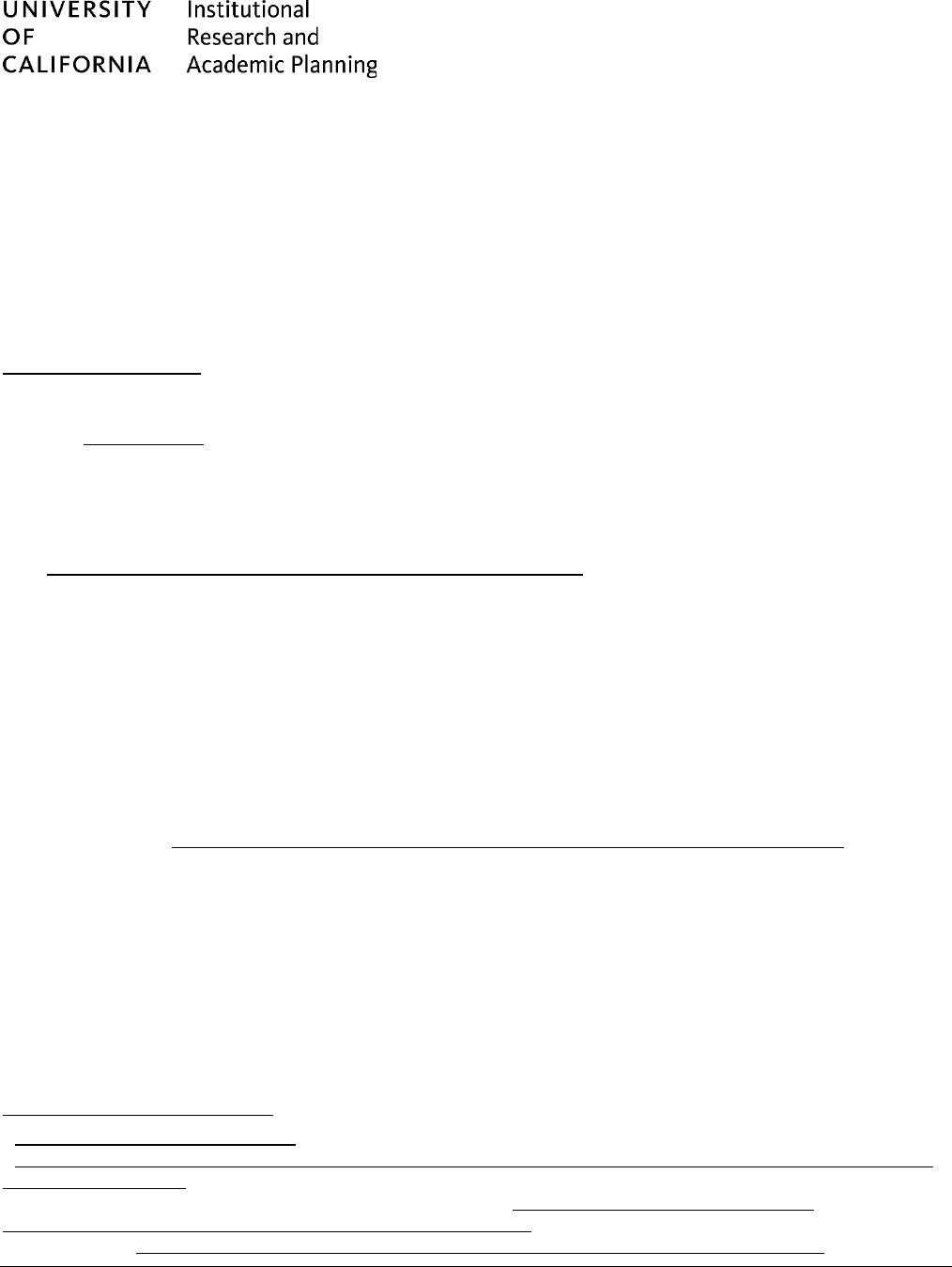
UC Extension Degree and Certificate Completion
Programs and the UC Reengagement Consortium
MARCH 2024 Find more at ucal.us/irap & ucal.us/infocenter 10
Certificate Completion Program and Workforce Market Demand
Research
In addition to the degree completion work, one-time state funds were used to increase certificate
completions targeting underserved communities, along with the development of a California
market demand workforce dashboard. Both efforts are described below.
UCLA Extension Certificate Completion Program
UCLAxCareerBridge is the Los Angeles Extension program providing adults from diverse under
resourced communities with access to professional training that prepares them for in-demand
careers. The goal is to extend access to education by removing financial barriers,
through partnerships an
d the grant funding provided by the State of California. Each training
program covers a specialized field and provides the educational background needed to attain
gainful employment including health benefits, and career pathways for advancement.
CareerBridge addresses three areas of high need and growth in the workforce, aligning with the
following certificates:
The A
lcohol and Drug Abuse Counseling Certificate (ADAC) provides training to meet a critical
need in treating substance use disorders (SUD). Approximately 2.9 million Californians (9%) age
12 and older have a substance use disorder (reported 2018-2019). Six percent reported
symptoms that met the criteria for abuse of or dependence on alcohol, and about 4% reported
meeting criteria for abuse of or dependence on illicit drugs
6F
7
yet only 10% of those affected
receive treatment. California is undertaking a major effort to expand SUD services, and well
educated and certified counselors are in demand especially since multiple reports indicate drug
overdoses have increased during the COVID-19 pandemic.
7F
8
Students completing the ADAC
serve an in-demand role in SUD treatment and gain employment in substance use disorder
treatment facilities, residential treatment centers, prisons, juvenile detention centers and
government agencies.
Graduates of the E
arly Childhood Education skill - Associate Teacher Certificate (ECE) are in
high demand because of growth in the field and the Governor’s budget proposal goals, which
recognize the essential need of quality early care for young children’s outcomes and for working
adults. In 2020, it was projected that 200,000 new early learning teachers would be required in
the state.
8F
9
The COVID-19 pandemic exacerbated this issue, with California permanently losing
10% of the ECE teaching force.
9F
10
This certificate provides the foundational knowledge needed to
become an Associate Teacher in a preschool or childcare setting, for children aged from birth to
five years. It meets the 12 ECE/CD units needed for the California Commission on Teacher
Credentialing Associate Teacher permit. Students funded by the grant are required to take a
prerequisite course, five core courses, and a practicum. Courses are also being offered in
Spanish for Spanish speaking students.
7
California Health Care Almanac, January 2022 (page 5)
8
A qualitative assessment of circumstances surrounding drug overdose deaths during early stages of the
COVID-19 pandemic. SUDORS Data Brief, Number 2, August 2022
9
Early Edge CA EECA Workforce Policy Summary 2020, https://earlyedgecalifornia.org/wp-
content/uploads/2020/02/EECA-Workforce-Policy-Paper.pdf
10
Cal Matters, https://calmatters.org/economy/2021/10/california-child-care-worker-shortage/
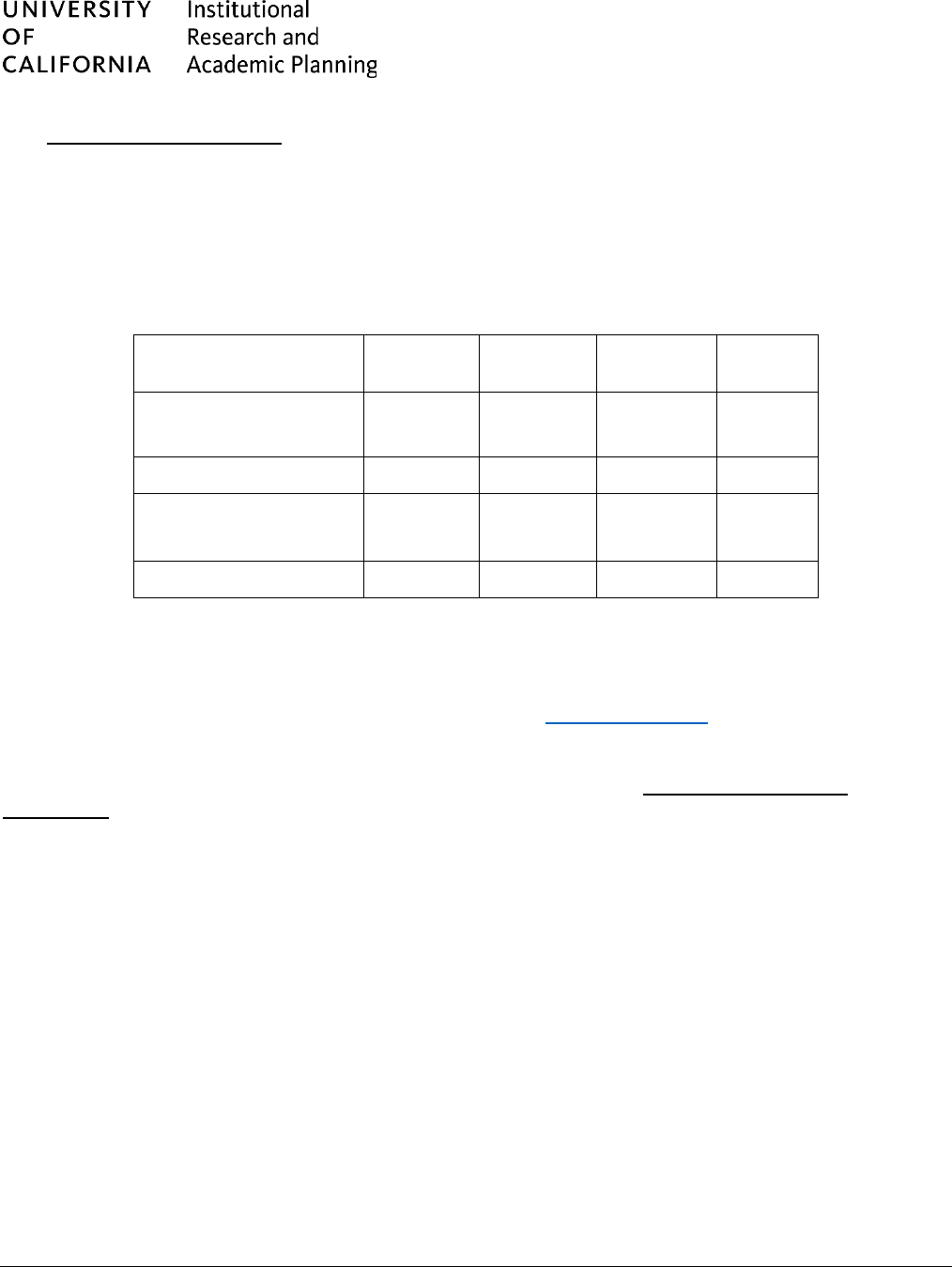
UC Extension Degree and Certificate Completion
Programs and the UC Reengagement Consortium
MARCH 2024 Find more at ucal.us/irap & ucal.us/infocenter 11
The Data Science Certificate offers students technical skills that are marketable and in high
demand so they can start careers in data science. This certificate provides hands-on experience
in data management, programming, statistics, and machine learning to extract, analyze and
communicate findings. Students learn to leverage the power of big data to gain insights and
improve decision making related to real-world problems.
Table 2 provide data on enrollment to date, along with degrees completed and counts for those
s
till enrolled.
Table 2. UCLA total certificate completion rates to date (fall 2023)
Certificate
Total
Enrollment
Certificates
Completed
Completion
Rate
Still
Enrolled
Early Childhood
Education (ECE)
54 16 29.6% 25
Data Science 74 15 20.3% 21
Alcohol and Drug Abuse
Counseling (ADAC)
48 6 12.5% 16
Total 177 37 20.9% 63
UC San Diego Extension Center for Research and Evaluation (CR+E) Degree
Completion Analysis and Workforce Market Demand
The one-time grant funding enabled CR+E to conduct a statewide survey of thousands of
Californias who have started but not finished four-year degrees and create a novel workforce
dashboard with a wealth of information on labor market supply and demand for all of the
metropolitan statistical areas (MSA) in the state of California. The Skillscape Workforce
Dashboard provides valuable insights into the regional labor markets for all of the UC campus
locations and is useful for identifying areas for program development and ensuring appropriate
alignment between current programs and workforce needs.
UCSD Extension Center for Research and Evaluation submitted a second proposal f
or additional
funding to update the workforce dashboard with current labor market data. In addition to updating
the dashboard data, improvements from user feedback can be integrated to make the tool were
more valuable and user friendly. The proposal was approved and has allowed them to continue
their work and expand the scope to provide data applicable to traditional campus programs and
UC alumni.
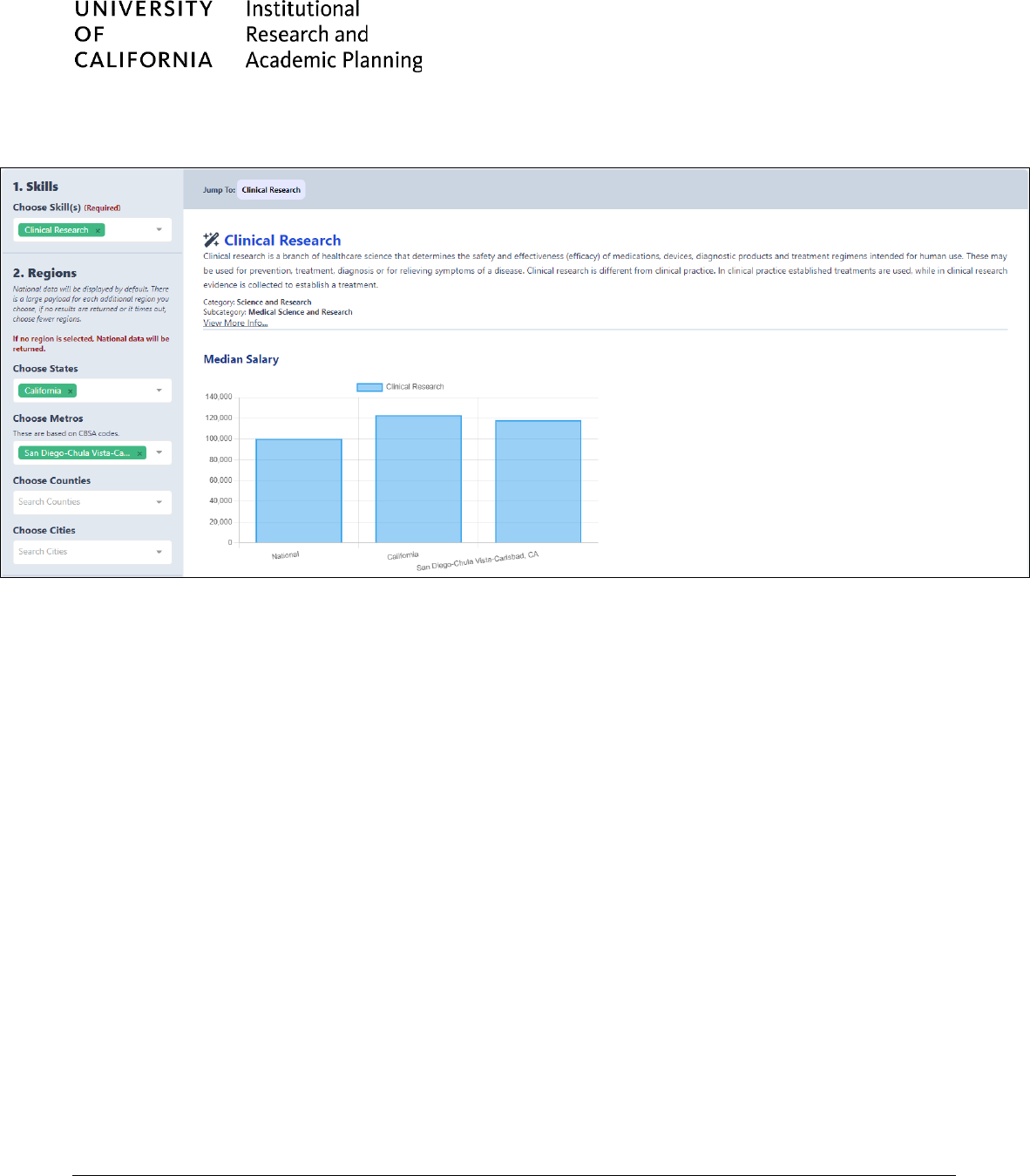
UC Extension Degree and Certificate Completion
Programs and the UC Reengagement Consortium
MARCH 2024 Find more at ucal.us/irap & ucal.us/infocenter 12
Figure 2. UC Workforce Dashboard
